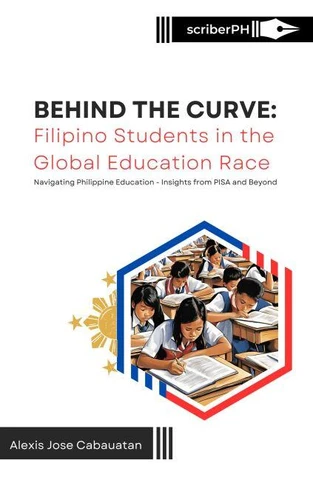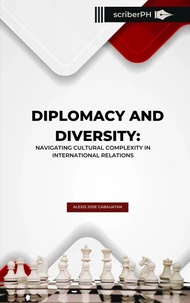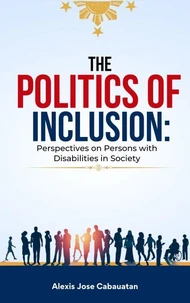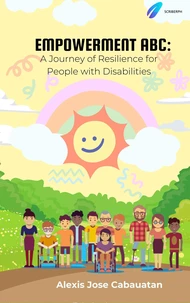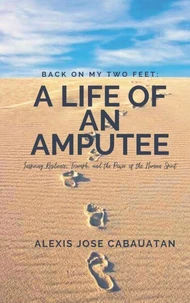Behind the Curve: Filipino Students in the Global Education Race
Par : ,Formats :
Disponible dans votre compte client Decitre ou Furet du Nord dès validation de votre commande. Le format ePub est :
- Compatible avec une lecture sur My Vivlio (smartphone, tablette, ordinateur)
- Compatible avec une lecture sur liseuses Vivlio
- Pour les liseuses autres que Vivlio, vous devez utiliser le logiciel Adobe Digital Edition. Non compatible avec la lecture sur les liseuses Kindle, Remarkable et Sony
 , qui est-ce ?
, qui est-ce ?Notre partenaire de plateforme de lecture numérique où vous retrouverez l'ensemble de vos ebooks gratuitement
Pour en savoir plus sur nos ebooks, consultez notre aide en ligne ici
- FormatePub
- ISBN978-621-06-2272-0
- EAN9786210622720
- Date de parution20/01/2025
- Protection num.pas de protection
- Infos supplémentairesepub
- ÉditeurLeigh Arreane
Résumé
The book "Behind the Curve: Filipino Students in the Global Education Race" explores deep into the challenges and potential solutions surrounding education in the Philippines. It meticulously analyzes the factors contributing to the country's performance in global educational assessments, such as the Program for International Student Assessment (PISA), and explores the implications of these findings on national educational policies and reforms.
The narrative of the book is enriched with detailed case studies, personal anecdotes, and data-driven insights, providing a comprehensive understanding of the educational landscape in the Philippines. It sheds light on disparities between urban and rural education, the impact of socioeconomic factors on learning outcomes, and the critical role of teachers and community engagement in shaping educational quality.
Throughout its chapters, "Behind the Curve" not only critiques the existing challenges but also proposes actionable recommendations for improvement. It advocates for curriculum reforms that prioritize critical thinking and creativity, highlights the importance of equitable access to resources and infrastructure, and calls for sustainable educational policies that cater to the diverse needs of Filipino students.
Ultimately, the book serves as a call to action for policymakers, educators, and community leaders to collaborate towards building a more inclusive, innovative, and effective education system in the Philippines. It aims to inspire dialogue, inform decision-making, and empower stakeholders to drive meaningful change that enhances educational opportunities and outcomes for all Filipino learners.
The narrative of the book is enriched with detailed case studies, personal anecdotes, and data-driven insights, providing a comprehensive understanding of the educational landscape in the Philippines. It sheds light on disparities between urban and rural education, the impact of socioeconomic factors on learning outcomes, and the critical role of teachers and community engagement in shaping educational quality.
Throughout its chapters, "Behind the Curve" not only critiques the existing challenges but also proposes actionable recommendations for improvement. It advocates for curriculum reforms that prioritize critical thinking and creativity, highlights the importance of equitable access to resources and infrastructure, and calls for sustainable educational policies that cater to the diverse needs of Filipino students.
Ultimately, the book serves as a call to action for policymakers, educators, and community leaders to collaborate towards building a more inclusive, innovative, and effective education system in the Philippines. It aims to inspire dialogue, inform decision-making, and empower stakeholders to drive meaningful change that enhances educational opportunities and outcomes for all Filipino learners.
The book "Behind the Curve: Filipino Students in the Global Education Race" explores deep into the challenges and potential solutions surrounding education in the Philippines. It meticulously analyzes the factors contributing to the country's performance in global educational assessments, such as the Program for International Student Assessment (PISA), and explores the implications of these findings on national educational policies and reforms.
The narrative of the book is enriched with detailed case studies, personal anecdotes, and data-driven insights, providing a comprehensive understanding of the educational landscape in the Philippines. It sheds light on disparities between urban and rural education, the impact of socioeconomic factors on learning outcomes, and the critical role of teachers and community engagement in shaping educational quality.
Throughout its chapters, "Behind the Curve" not only critiques the existing challenges but also proposes actionable recommendations for improvement. It advocates for curriculum reforms that prioritize critical thinking and creativity, highlights the importance of equitable access to resources and infrastructure, and calls for sustainable educational policies that cater to the diverse needs of Filipino students.
Ultimately, the book serves as a call to action for policymakers, educators, and community leaders to collaborate towards building a more inclusive, innovative, and effective education system in the Philippines. It aims to inspire dialogue, inform decision-making, and empower stakeholders to drive meaningful change that enhances educational opportunities and outcomes for all Filipino learners.
The narrative of the book is enriched with detailed case studies, personal anecdotes, and data-driven insights, providing a comprehensive understanding of the educational landscape in the Philippines. It sheds light on disparities between urban and rural education, the impact of socioeconomic factors on learning outcomes, and the critical role of teachers and community engagement in shaping educational quality.
Throughout its chapters, "Behind the Curve" not only critiques the existing challenges but also proposes actionable recommendations for improvement. It advocates for curriculum reforms that prioritize critical thinking and creativity, highlights the importance of equitable access to resources and infrastructure, and calls for sustainable educational policies that cater to the diverse needs of Filipino students.
Ultimately, the book serves as a call to action for policymakers, educators, and community leaders to collaborate towards building a more inclusive, innovative, and effective education system in the Philippines. It aims to inspire dialogue, inform decision-making, and empower stakeholders to drive meaningful change that enhances educational opportunities and outcomes for all Filipino learners.

